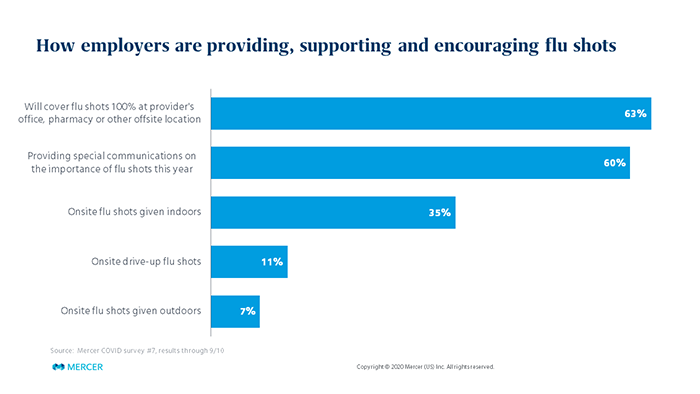Get Your Flu Shot – And Make Sure Your Employees Get One Too
 Alex Robinson Photography
Alex Robinson Photography
If there ever was a year to get a flu shot, this is it. You have been hearing this from health experts from the CDC, local public health, the media and others. Here are three reasons why we medical professionals are worried:
Co-infections. First, SARS-CoV-2, the virus that causes COVID-19, is still very much with us. We’ve seen case reports from the Southern hemisphere that co-infections of COVID-19 and influenza can occur. While it is not clear yet what this might look like, or how common it might be, it has the potential to be bad.
Similar symptoms. People infected with either influenza or COVID-19 have a very similar pattern of symptoms, which can make diagnosing and subsequent treatment (such as anti-virals for influenza) and care tricky. This additional challenge for healthcare providers and caregivers is likely to cause confusion and unforeseen difficulties.
We might get lucky this season, but we might not. Another unknown is how bad the flu season will be in the US this year. COVID and flu are both respiratory viruses, largely spread by droplets, so mitigating measures for one stems spread of the other as well. This is likely why the Southern hemisphere is seeing little flu activity. However, that is no guarantee of what the flu season in the US will look like, as our activities and behaviors might be very different.
Given all the good reasons to get a flu shot, why wouldn’t you? Flu shots are safe. They cannot cause the flu. While historically flu shots have had limited efficacy (last season’s flu shot was about 45% effective against the strains we saw circulating), those who get the flu shot and subsequently catch the flu often experience significantly less severe symptoms than those who do not receive the vaccine. The flu is nothing to sneeze at (pun intended). Influenza infects millions in the US every year and kills 20,000 – 50,000 of us. The burden of influenza combined with the expected regional spikes in COVID-19 could very well overwhelm the healthcare system.
While employers understandably have been distracted by the need to mitigate the impacts of COVID-19, flu shots are now top of mind for many. In an ongoing survey with about 100 US employers responding so far, more than a third (35%) are directing employees to onsite flu clinics, with precautions like masks and distancing. Some are getting creative and providing flu shots at drive-up sites or outdoor locations. Nearly two-thirds will cover a flu shot received at a pharmacy, clinic or doctor’s office at 100%.

Time to get the word out!
I was surprised – and not in a good way -- to see that only 60% of survey respondents are planning special communications to impress upon their employees how important it is to get a flu shot this year. Sometimes you need to nag -- that’s what I’m doing right now. The ideal time to get a flu shot is September or October, which means the sooner you start communicating, the better. But receiving the vaccine even late into the flu season can be medically prudent and valuable, so keep sending those reminders.
